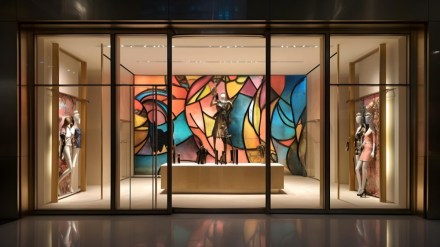By Vaidehi Savnal
The syncopated sounds of a trolley rumbling down a rough path with a trunk jangling atop is almost drowned out as the murmur of voices of excited children reaches a crescendo. “Do you think didi has brought us those colourful beads to see again this time?” asks one child, while her friend shakes her head saying that she would much rather look at the toy cart on wheels. The objects in question are a part of the Harappan Civilisation trunk, part of the Trunk Museum Project initiated by the Chhatrapati Shivaji Maharaj Vastu Sangrahalaya, Mumbai. An initiative to create a first-hand, sensorial experience of history, the museum educators carry these trunks to schools and NGOs and conduct immersive, interactive sessions. While both girls are momentarily disappointed that the trunk in question does not contain the objects of their fancy, their faces soon light up when they realise that this time round, it is a trunk on Ancient Egypt – filled with fascinating figures of composite animal-human gods and of course, mummies.
This is but an example of the power that museum objects hold. They have the ability to create a direct and personal connection with people. For these young girls, these experiences and memories will find new resonance when they turn the pages of their history textbooks, the images in their books having actually come to life before them.
The implementation of the New Education Policy is an epoch for museums and cultural institutions in India. With emphasis on experiential learning, traditional knowledge systems and sector training – museums are poised to fulfil a unique need that has emerged in formal educational systems in the country.
The traditional notion of a museum is evolving, moving beyond the static image of halls and halls of an esoteric assembly of antiquities, dim lights and sparse information. Museums today are thriving research and educational institutions with an emphasis on thoughtfully curated and designed displays, well researched and written content, sound scientific methods being applied to artefact care and robust educational programmes for all ages.
There has been a shift in the way young adults are experiencing the museum — contrary to popular notion, a generation of young Indians are museum-goers. People between the ages of 16 and 25 are seen most at the CSMVS today, with their peers, friends, dates, making the choice to repeatedly visit the Museum. In this the on-the-job training module introduced as part of the NEP is playing an additional role in projecting museums as a viable vocation. At the CSMVS Museum today, where the workforce is primarily young (women), the young curates for the young, a great departure from what’s assumed of scholarship in the museum field. And there are more in the making, holding great promise for the future of the culture sector. Through a partnership with the University of Mumbai, students across disciplines will be provided on-the-job training areas including collection management and care, exhibitions and public engagement. Not only will they receive course credits at the end of the programme but also first-hand industry experience in a museum, a model that can be easily adopted around the country given that there are several thousand museums in existence in big cities, towns and villages alike.
In the recent exhibition, Points of View that was curated by a set of 14 children at the CSMVS Children’s Museum, a young boy chose to write about a set of fishing hooks from Harappa, dating back over 5000 years. He writes, “These Harappan fishing hooks caught my attention very quickly due to their sharp ends and rusted surface although it was difficult to identify what they were at first. These J-shaped fishing hooks have retained this shape from the bronze age to the 21st century and fishermen today still use them. Instead of carrying huge fishing nets, these fishing hooks were a handy option for fishermen.” A very astute reading by a 13-year-old who attends a municipal body run public school, stemming from his deep-rooted familiarity of the local culture of the fishing villages of Mumbai. These are the small connections we make when we immerse ourselves with art. At times we see a reflection of ourselves in an artefact, we marvel at the ingenuity of those before us, (often) learn something new but almost always contemplate how our worlds today are shaped by the past. The clues to who we are as a species, our identity and our impulses, all lie locked away in these objects and museums help unlock them.
The author is the Curator (Education and Public Programmes) CSMVS.
